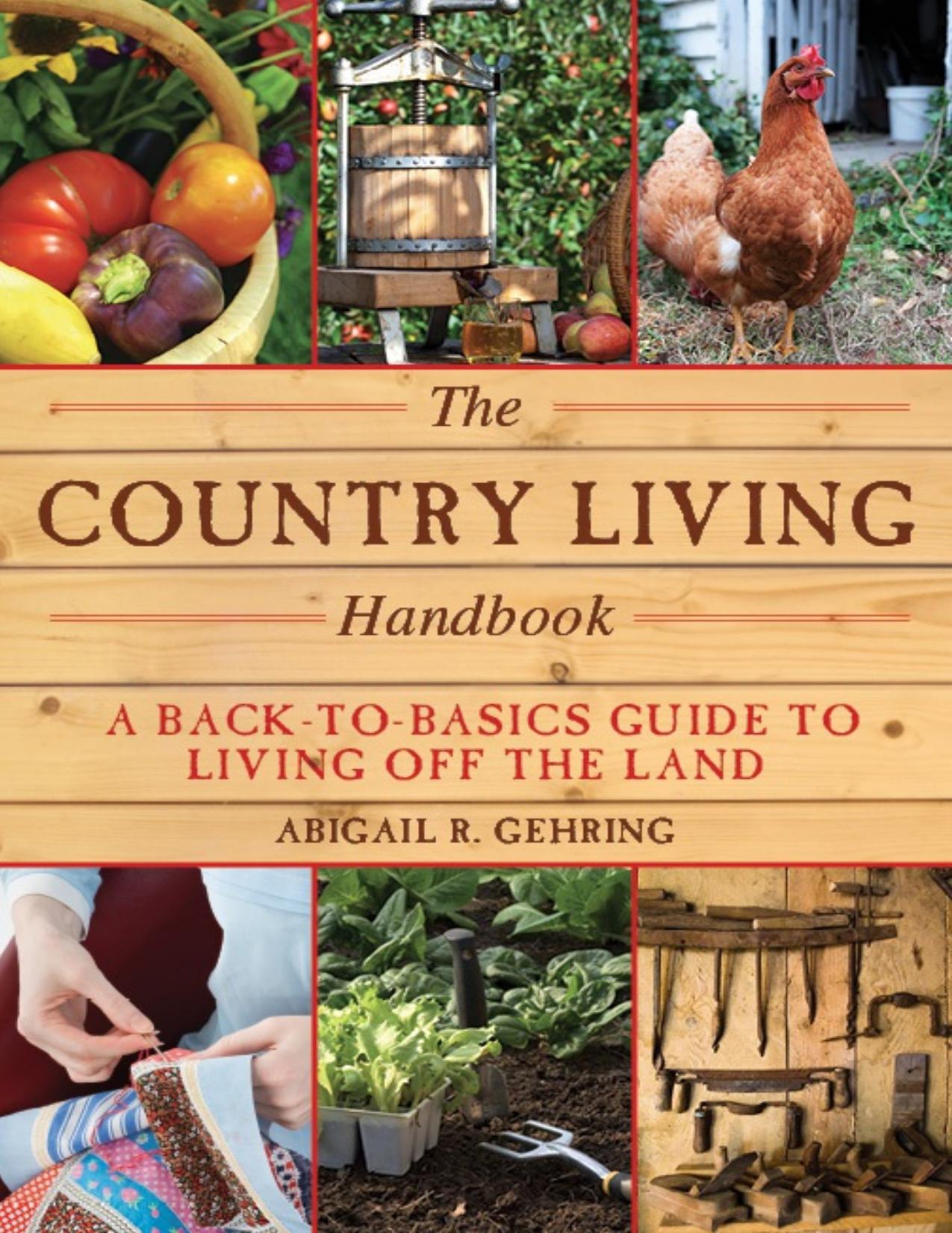The Country Living Handbook by Abigail R. Gehring

Author:Abigail R. Gehring
Language: eng
Format: epub, pdf
Publisher: Skyhorse Publishing
Published: 2013-12-31T16:00:00+00:00
Shaggy Mane Mushroom
WARNING: Amanita mushrooms are very poisonous. Do not eat any mushroom that resembles an amanita!
Yogurt
Yogurt is basically fermented milk. You can make it by adding the active cultures Streptococcus thermophilus and Lactobacillus bulgaricus to heated milk, which will produce lactic acid, creating yogurt’s tart flavor and thick consistency. Yogurt is simple to make and is delicious on its own, as a dessert, in baked goods, or in place of sour cream.
Yogurt is thought to have originated many centuries ago among the nomadic tribes of Eastern Europe and Western Asia. Milk stored in animal skins would acidify and coagulate. The acid helped preserve the milk from further spoilage and from the growth of pathogens (disease-causing microorganisms).
Ingredients
Makes 4 to 5 cups of yogurt
• 1 quart milk (cream, whole, low-fat, or skim)— In general the higher the milk fat level in the yogurt, the creamier and smoother it will taste. Note: If you use home-produced milk it must be pasteurized before preparing yogurt.
• Nonfat dry milk powder—Use ⅓ cup powder when using whole or low-fat milk, or use ⅔ cup powder when using skim milk. The higher the milk solids, the firmer the yogurt will be. For even more firmness add gelatin (directions below).
• Commercial, unflavored, cultured yogurt— Use ¼ cup. Be sure the product label indicates that it contains a live culture. Also note the content of the culture. L. bulgaricus and S. thermophilus are required in yogurt, but some manufacturers may in addition add L. acidophilus or B. bifidum. The latter two are used for slight variations in flavor, but more commonly for health reasons attributed to these organisms. All culture variations will make a successful yogurt.
• 2 to 4 tablespoons sugar or honey (optional)
• 1 teaspoon unflavored gelatin (optional)—For a thick, firm yogurt, swell 1 teaspoon gelatin in a little milk for 5 minutes. Add this to the milk and nonfat dry milk mixture before cooking.
Supplies
• Double boiler or regular saucepan—1 to 2 quarts in capacity larger than the volume of yogurt you wish to make.
• Cooking or jelly thermometer—A thermometer that can clip to the side of the saucepan and remain in the milk works best. Accurate temperatures are critical for successful processing.
• Mixing spoon
• Yogurt containers—cups with lids or canning jars with lids.
• Incubator—a yogurt-maker, oven, heating pad, or warm spot in your kitchen. To use your oven, place yogurt containers into deep pans of 110°F water. Water should come at least halfway up the containers. Set oven temperature at lowest point to maintain water temperature at 110°F. Monitor temperature throughout incubation, making adjustments as necessary.
Processing
Download
The Country Living Handbook by Abigail R. Gehring.pdf
This site does not store any files on its server. We only index and link to content provided by other sites. Please contact the content providers to delete copyright contents if any and email us, we'll remove relevant links or contents immediately.
The Body: A Guide for Occupants by Bill Bryson(4945)
Audition by Ryu Murakami(4818)
Adulting by Kelly Williams Brown(4462)
Housekeeping by Marilynne Robinson(4301)
Be in a Treehouse by Pete Nelson(3922)
Zero Waste Home by Bea Johnson(3761)
Seriously... I'm Kidding by Ellen DeGeneres(3560)
Better Homes and Gardens New Cookbook by Better Homes & Gardens(3508)
The Healing Self by Deepak Chopra(3449)
Barkskins by Annie Proulx(3285)
Hedgerow by John Wright(3258)
The Cellar by Natasha Preston(3241)
Spark Joy by Marie Kondo(3230)
The Genius of Japanese Carpentry by Azby Brown(3208)
The Life-Changing Magic Of Tidying Up- The Japanese Art Of Decluttering And Organizing (v5.0) by Marie Kondo(3195)
120 Days of Sodom by Marquis de Sade(3159)
Work Clean by Dan Charnas(3034)
The Book of Numbers by Peter Bentley(2896)
A Monk's Guide to a Clean House and Mind by Shoukei Matsumoto(2854)
